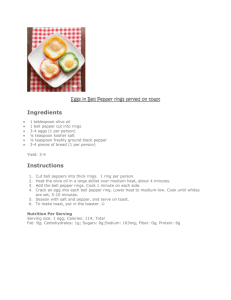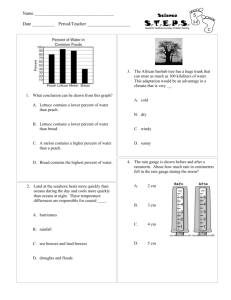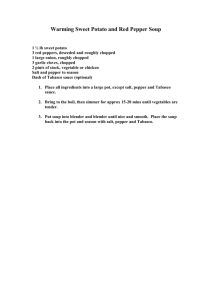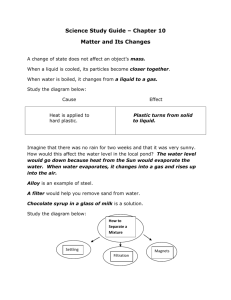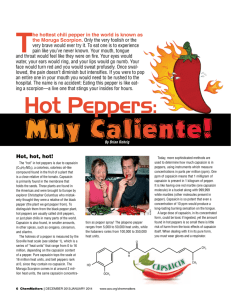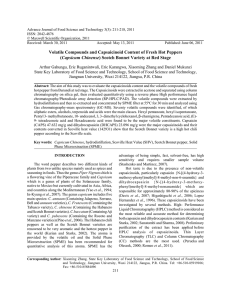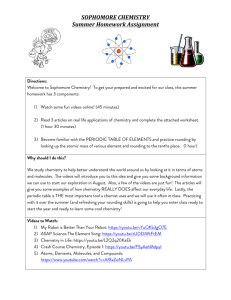Reading/RAP/Application
advertisement
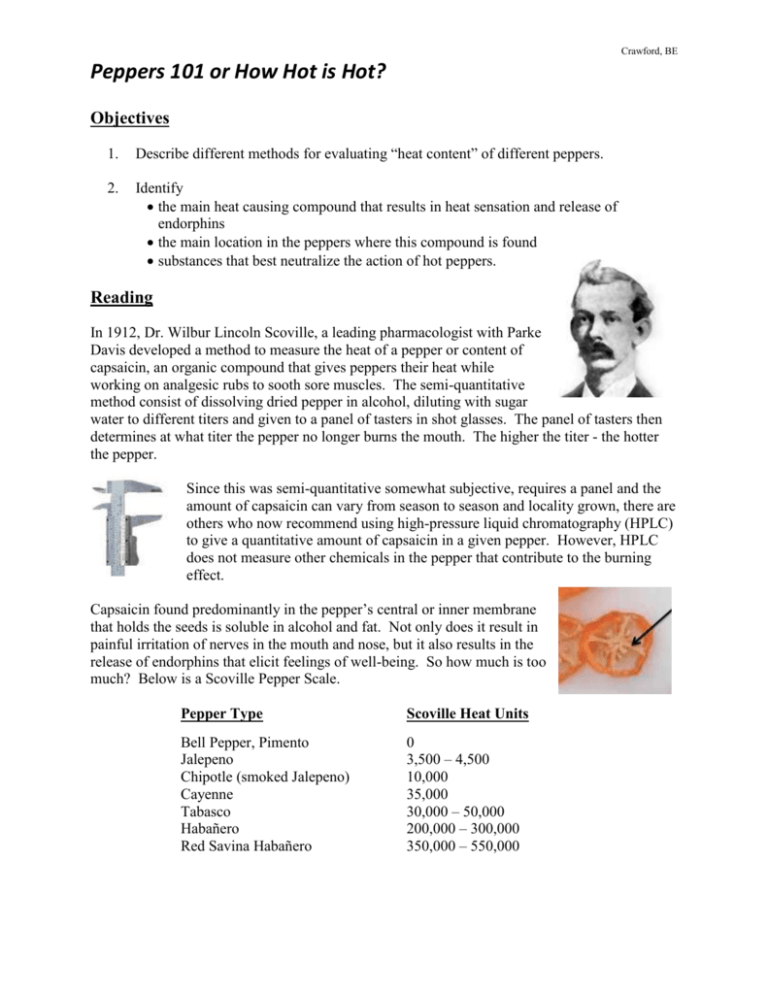
Crawford, BE Peppers 101 or How Hot is Hot? Objectives 1. Describe different methods for evaluating “heat content” of different peppers. 2. Identify the main heat causing compound that results in heat sensation and release of endorphins the main location in the peppers where this compound is found substances that best neutralize the action of hot peppers. Reading In 1912, Dr. Wilbur Lincoln Scoville, a leading pharmacologist with Parke Davis developed a method to measure the heat of a pepper or content of capsaicin, an organic compound that gives peppers their heat while working on analgesic rubs to sooth sore muscles. The semi-quantitative method consist of dissolving dried pepper in alcohol, diluting with sugar water to different titers and given to a panel of tasters in shot glasses. The panel of tasters then determines at what titer the pepper no longer burns the mouth. The higher the titer - the hotter the pepper. Since this was semi-quantitative somewhat subjective, requires a panel and the amount of capsaicin can vary from season to season and locality grown, there are others who now recommend using high-pressure liquid chromatography (HPLC) to give a quantitative amount of capsaicin in a given pepper. However, HPLC does not measure other chemicals in the pepper that contribute to the burning effect. Capsaicin found predominantly in the pepper’s central or inner membrane that holds the seeds is soluble in alcohol and fat. Not only does it result in painful irritation of nerves in the mouth and nose, but it also results in the release of endorphins that elicit feelings of well-being. So how much is too much? Below is a Scoville Pepper Scale. Pepper Type Scoville Heat Units Bell Pepper, Pimento Jalepeno Chipotle (smoked Jalepeno) Cayenne Tabasco Habañero Red Savina Habañero 0 3,500 – 4,500 10,000 35,000 30,000 – 50,000 200,000 – 300,000 350,000 – 550,000 Crawford, BE Readiness Assurance Test (D004) 1. Which one of the following components of a pepper has the highest concentration of capsaicin, the compound that elicits pain, burning sensation, tearing, and the elation/high that some people experience? A. Seeds B. Outer capsule of the skin C. Outer capsule of seeds D. Inner membranes 2. Which of the following statements best describes the methodology of rating a pepper’s hotness on the Scoville Heat Scale? A. B. C. D. 3. Dissolve dry pepper in alcohol, dilute in sugar water and give to a panel of tasters for their determination of the highest dilution retaining pain in the oral cavity. Dissolve dry pepper in alcohol, dilute in sugar water and give to a panel of tasters for their determination of the highest dilution retaining the taste of alcohol. Quantitatively measuring the amount of capsaicin in the pepper’s seeds using high-pressure liquid chromatograph. Quantitatively measuring the amount of capsaicin in the septate membranes with high-pressure liquid chromatography. Some people seem to get addicted to eating hot peppers and experiencing the elation and the “high”. What is happening to cause this? A. B. C. D. Serotonin levels are suppressed Serotonin levels incease Endorphin levels are suppressed Endorphin levels increase Crawford, BE Application Exercise 1. You were just challenged to ingest, chew for one-minute and swallow a freshly picked 2 x 1 inch red Savina habañero pepper (427,000 Scoville Heat Units), the world’s hottest pepper. Which one of the following would you select to have available to help you tolerate or obtain relief from the results of accepting this challenge? A. B. C. D. E. 2. One gallon of cold Kentwood bottled water A shot of tequila A frozen brandy Alexander Frozen yogurt Corn tortillas You have been given a collection of hot peppers. You are asked to determine the hotness of each pepper in the collection. You have been given a very limited amount of time and a limited budget. What would you do? A. Run a direct tasting panel – where panelists try small weighed samples of each pepper type. B. Run HPLC tests on each pepper to determine the exact level of capsaicin in each pepper. C. Run HPLC tests on each pepper to determine the exact level of all active ingredients. D. Consult the Scoville Pepper Scale tables to identify pepper type and hotness ranges. E. Run a Scoville like tasting panel

